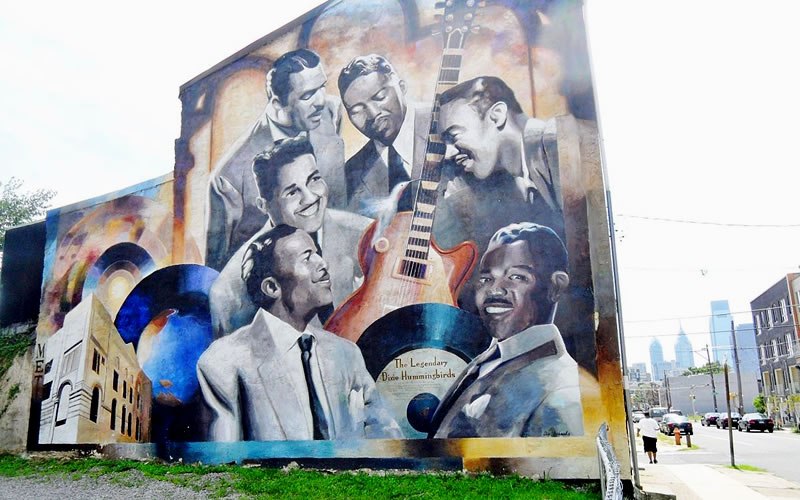
A mural of the Dixie Hummingbirds in Philadelphia, Pa.
S.C. Encyclopedia | Started in 1928 by twelve-year-old James Davis and neighborhood friends Bonnie Gipson, Jr., Fred Owens, and Barney Parks, the gospel quartet—and later quintet—influenced scores of gospel, soul, and rock and roll artists. First called the Sterling High School Quartet, named for the high school the young men attended in their hometown of Greenville, the group made the transition from a cappella harmony singing at the Bethel Church of God to electrified music.
The group was singing professionally in churches and on the radio by the mid-1930s, and Davis wanted to name the group the South Carolina Hummingbirds but determined that that would be too long. The Birds, as their fans affectionately came to call them, drove to New York City to record twelve old-time harmony sides for the Decca label in 1938. That same year, with the addition of the thirteen-year-old singer and Spartanburg native Ira Tucker, the group moved toward a more powerful electric sound that served as a precursor to rock music. The group moved to Philadelphia in 1942, and Tucker worked his way from backing tenor into the group’s fiery and flamboyant (for the times and the genre of music) lead singer. By their 1952 recordings on the Peacock label, the Birds were on their way to gospel stardom.
The group is perhaps best known for their re-recording of “Loves Me Like a Rock” with the singer-songwriter Paul Simon in 1973, for which they won a Grammy Award. Artists as prominent as Stevie Wonder credit the Birds as a direct musical influence, drawing on Tucker’s audience interaction and his soaring, pleading vocals. William Bobo, who joined the group after Tucker, is considered to be one of the great bass singers in the history of American popular music. One reviewer wrote that the group claimed “almost universal recognition as the greatest Southern quartet of their generation.”
— Excerpted from an entry by Alan Richard. This entry hasn’t been updated since 2006. To read more about this or 2,000 other entries about South Carolina, check out The South Carolina Encyclopedia, published in 2006 by USC Press. (Information used by permission.)



 We Can Do Better, South Carolina!
We Can Do Better, South Carolina!
























